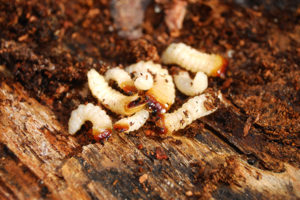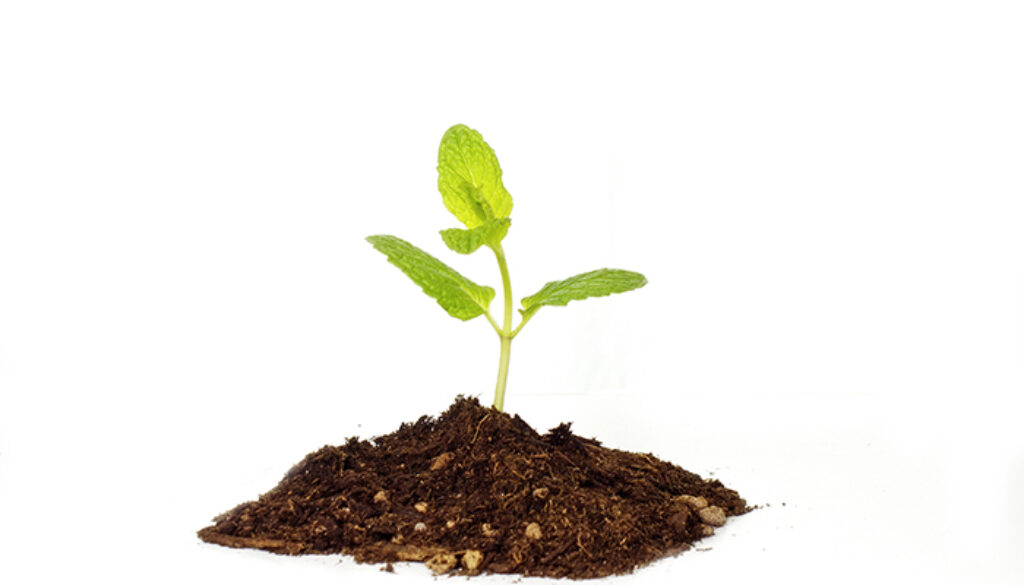Appropriate Composting Methods For The Suburban Gardener
By Jordan Scroble of Grow Your Own Freedom
As gardeners and everyday inhabitants of the Earth we create waste. Waste is something leftover after a project we worked on. Waste is something no longer of value to us or perhaps we never placed value on it to begin with. Waste might be garden debris, fallen leaves, kitchen scraps, junk mail, old newspaper, or even an old cotton t-shirt. As gardeners who wish to obtain a certain yield from our gardens we have to realize that by growing and harvesting our veggies we are taking nutrients away from the soil. We are taking the basic elemental nutrients and compounds from the soil in return for healthy, vitamin rich food. The most important thing that we can do in return, so that we can continue to harvest nutrient dense veggies for years to come, is feed the soil, feed the soil microbes, and the earthworms. So how exactly do we do this? By applying compost of course! Let’s review a few appropriate composting methods for suburban gardeners and I will share the system that we use currently in our household to manage nearly all of our kitchen scraps and garden waste.
But first, you might be asking “what exactly is compost“? Compost is simply decayed organic matter used as a plant fertilizer or mulch. It is decomposed leaves, straw, grass clippings, newspaper, twigs, fruit and vegetable waste. It is a rich dark crumbly material often known as “black gold”. It can include but does not have to include animal manure.
I am sure I won’t even come close to listing all of the benefits of compost and composting, but here is a short list:
- Reduce waste that goes into a landfill
- Eliminate pesky odors that emit from our trash cans
- Eliminate pests that may visit our outdoor trash cans
- Turn waste into a resource
- Enrich our garden soil
- Increase the water holding capacity of our soil
- Help to break up dense clay soils and improve soil structure
- Protect the surface of our garden soil
- Increase the health of our garden plants
- Can help to bind certain pollutants in the soils
So, how is compost made? The three main composting methods, in my opinion, that are most applicable to small urban or suburban gardener are worm composting, bokashi composting, and a traditional open pile composting process. I am going to highlight the details of each method below but know that I utilize all three of these methods to some capacity to create nutrient rich compost.
Worm Composting (Vermiculture):

Worm composting can be a great adventure for kids and is a great method for urban areas or for gardeners with very little outdoor space. This typically is done in relatively shallow containers indoors and requires a specific type of worm, red wigglers, not just regular garden earthworms. Worm composting kits can be purchased or made simply using storage totes with air holes. Bedding consists of either shredded junk mail and newspaper or coconut fiber called coir. Shredded junk mail and newspaper is free though and makes use of this waste as well as the vegetable and fruits scraps that the worms can digest. The red wigglers can consumer about half of their body weight a day in food so if you start with 1 pound of worms, you can feed them nearly 3.5 pounds of scraps a week. This is a very easy, low maintenance process that can generate finished worm compost in 3 months.
I use this method all year long but it is particularly useful in the winter when outdoor composting is stagnant. I keep 2 worms bins in our basement where the temperature is pretty much a consistent 65 degrees all year. I have found that it is best to avoid adding scraps with lots of seeds, like tomatoes, and squash especially, because the worms do not seem to consume these and I end up with random tomato and squash seedlings emerging everywhere I place the finished worm compost in the garden. This was particularly frustrating when I mixed some worm compost into a seed starting mix one Spring.
Bokashi Composting:
This is another very easy, low maintenance composting method particularly useful for urban settings but absolutely useful for every gardener. Bran, inoculated with specific microbes, is used to ferment fruit, vegetable, even meat and solid dairy scraps in an anaerobic environment. This method is typically done in some sort of plastic container that can be completely sealed off. 5 gallon buckets are commonly used with gamma lids which contain a couple gaskets to prevent oxygen from entering the container. Scraps are added to the bucket with a small handful of the inoculated bran and once the bucket is completely full, the bucket is left to sit undisturbed for at least 2 weeks. During the fermentation process, the cell walls and structure of the food is broken down even though the foods may appear very much the same as when they were first placed in the bucket. After the 2 week time period, the bokashi is dug in to garden soil or added to an outdoor compost pile to be finished off by the aerobic microbes which then typically only takes a couple of weeks.
This is the fastest of the 3 composting methods described in this article and probably the simplest. This can be done all winter long, the full buckets simply stored out of the way until early Spring, and then dug into the garden beds a few weeks before planting time. If you end up with full buckets during the Summer with no garden space to dig in to, the bokashi can be added to a traditional open compost pile which will even help speed up the decomposition of the entire pile.
This is probably my favorite method of composting because it is so simple, fast, very low maintenance, and takes up very little space. I can do this all year long and all I need to have on hand is a few 5 gallon buckets with gamma lids, and the inoculated bokashi bran. Keep in mind that because the full bucket needs to sit unopened for at least 2 weeks prior to added to the garden soil, you will want to have at least one other bucket available to continue your bokashi composting.
Traditional Open Pile Composting:
This can be the simplest method of composting but it often gives people the most trouble. Often times problems arise because the compost pile is too small, there is not enough “browns”, or there is too much or too little water. When I say open pile, I do mean that this pile is in contact with the ground, and there is free air flow all around the pile. The pile should be at a minimum, 3 feet wide by 3 feet deep by 3 feet tall. This is necessary so that the pile, as the materials are decomposing, can build and maintain heat necessary to kill potential pathogens and weed seeds. This type of composting requires a certain ratio or mix of “greens” and “brown”. Greens, nitrogen rich, being fresh vegetative waste like fruit and vegetable scraps, coffee grounds and freshly pulled weeds. Browns, carbon rich, include shredded fall leaves, small twigs, straw, newspaper and shredded junk mail. The bulk of the compost pile needs to be browns. You can slowly build the compost pile as you have material available but the best way to compost with this method is to build the 3x3x3 pile all at once. The problem here is usually with having enough browns. To get around this, it helps to shred several large bags of fall leaves and store these over winter in a shed or garage so that you have access to them come spring and summer of the following year. Finally, for the composting process to work, there needs to be adequate moisture. Not sopping wet, but not bone dry. Lightly damp or like a wrung out sponge is the most common analogy given.
Now, you can also compost in large containers, tumblers, bins, etc., but those do require a little more management. Sufficient drainage is needed, and the size really needs to be at least 27 cubic feet in volume to maintain appropriate heat. Do not be tempted by claims that tumblers can generate finished compost in 2 to 4 weeks. This will definitely not be the case…3 months at best if filled completely from the start.
I personally like to just use 4 foot tall welded wire fencing with 2×3 inch openings. I cut a length of about 9 feet and create a circle that is about 3 feet in diameter. I try to strictly use this method for garden debris and fall leaves. We have a pet bunny so I also add his litter to this pile as well. I don’t typically bother turning this pile, rather I just let it sit for at least a year. Turning will definitely help to speed the process up but I have better things to do with my time.
My Composting System:
This is how I use all 3 methods throughout the year to keep all of our kitchen scraps out of the landfill and to constantly feed our garden soil.
- I have two worm bins in our basement that consume shredded junk mail, newspaper, and about 7 pounds of food waste (no meat, dairy, fish, or seeds) every 2 weeks. I harvest the compost about twice a year and add this worm compost to my seed starting mix and to the planting holes of heavy feeders like tomatoes and squash. I brew a worm compost tea and spray seedlings and perennials in the Spring.
- I have two 5 gallon buckets fitted with gamma lids and keep a small supply of the inoculated bran available to bokashi compost all year long. The vegetable and fruit scraps that don’t make it to the worm bin, plus any scraps loaded with seeds, go into the bokashi container. When I can’t dig a trench in an open garden bed, I add the bokashi compost to my outdoor open compost pile.
- I currently have one outdoor open compost pile contained with 4 foot high, welded wire fencing with 2″ x 3″ openings. It’s about 3 feet in diameter, maybe a little more. I use this to dump our pet bunny’s litter, any garden debris, shredded paper, and leaves I collect in the fall. Amazingly, with how much I add to this pile, it continues to shrink. I don’t turn it. I spray it down periodically to wet it. And I have only harvested the composted once from it and used it to build a new garden bed.
- I also add some of the aforementioned bunny litter as a light mulch to our fruit trees.
I hope seeing a little glimpse of my composting process and system helps as well as the brief information about each method I use.
Do you need to do all three methods? Of course not. The bottom line is that if you are able to prevent some of your waste from ending up in a landfill and are able to cycle it right back into your very own garden beds building and maintaining soil fertility, then whatever method that is, it is the perfect method for you.



